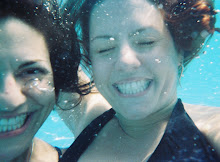I can’t go on. I’ll go on is on online exhibit from Samuel Beckett’s novel Molloy. It is an interactive piece that consists of two parts. The first is a blog portion where viewers are encouraged to leave their thoughts and comments. The second portion is a multimedia presentation that is triggered by comments left on the blog. Each comment changes the multimedia display based on the keyword entered. Appropriate excerpts accompany the deconstructed keyword that goes under the video.
Most of the videos are also deconstructed. The entire picture is not shown, but rather only certain portions. Beckett’s writing accompanies the videos as well. The text is dark and foreboding. I attempted to add a trigger word in the blog portion, but could not get the software to add my words. I do not know if there is a glitch in the system or if I was not doing it properly. Despite this, I was able to watch the streaming video with the comments of those that had visited the site prior to me.
One video seemed to be about death and accepting one’s destiny. The sound effects that go with the videos and text are on a continuous loop and do not change depending on content. The exhibit is cool and I enjoyed the interactive portions the best. I would probably have enjoyed it more if I could have left comments, but never the less it was still interesting. I really enjoyed how the deconstructed words scrolled on to the page slowly. The entire mood of the piece was vey mysterious and I think this definitely enhanced that feeling.
















